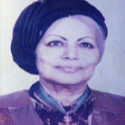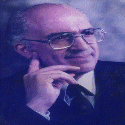Saqqara Excavation
Faculty of Archaeology - Cairo University
بسقارة
History of Saqqara Excavation

The location of Cairo University's excavations on the south side of the causeway of King Unas at Saqqara was first selected in 1977 by the late Profesor Soad Maher, Professor of Islamic architecture, who was, at that time, looking for Coptic monuments, Not interested in finds from Pharonic period, she discontinued the work, having located the presence of an ancient Egyptain necropolis.

From 1984 to 1988 the late Professor Said Tawfik carried out excavations at the same location. He discovered approximately 36 tombs, ranging from poor burials and simple shafts to big superstructures. Only 16 of these tombs were found bearing inscriptions; while, the other 20 were uninscribed and, and we know nothing until now about their owners. According to the inscriptions and texts in the 16 tombs, they belong to high officials from the Ramesside Period, dating more precisely to the reign of Ramesses II. The general plan of these tombs is temple-like, comprised of pylon-shaped entrance with one or two peristyle courts leading to a sanctuary and ending, as a rule, with a rubble-filled pyramid, usually inscribed with the name and titles of the tomb owner. The largest superstructure among this group of tombs belongs to Nfr-rnpt, vizier, sem-priest of Ptah, greatest of directors of craftsmen, father of the god, beloved of the god Nfer-renpet. The style of these tombs differs from those belonging to the high officials dating to the same period at Thebes.

Starting from 2005 Prof. Dr. Ola Al-Augizy the former dean of faculty of archaeology became responsible for the excavtion mission. Ten excavation seasons were undertaken since then. Many tombs were discovered most of them dated to the Ramesside period such as wadj-mes, Ptah-mes and Paser tombs. The conservaton and preservation work done for these tombs.
Copyright © 2015 - All Rights Reserved - Faculty of Archaeology - Cairo University
Template by OS Templates








